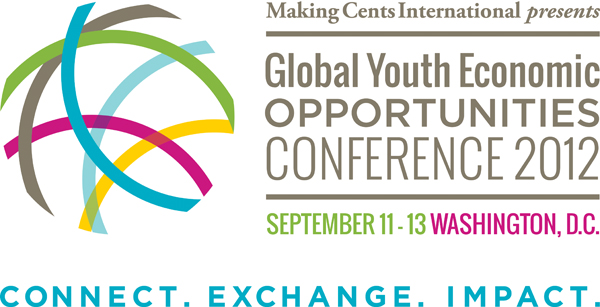Youth Economic Opportunities Conference: Are donors really ready to pay for what they say they most value?
Insights from the 2012 Youth Economic Opportunities Conference
 September 11-13, 2012 | Washington, DC
September 11-13, 2012 | Washington, DC
These observations are provided by David James-Wilson (Making Cents International), an experienced youth work professional with a 25-year track record in the design and delivery of innovative youth livelihood and non-formal education services. David has managed multi-disciplinary work readiness, education, and enterprise development teams in government and non-government settings; and is well versed in the interplay between government policy, the development and funding of new services, and building the capacity of lead institutions to take innovative youth programs to scale.
Two words I have been hearing in almost every recent conversation with donors are “scale” and “impact.” Not surprisingly, donors are always asking for more of both – especially when it comes to economic opportunities for youth. What has not been so clear to me is whether or not donors are really in a position to support the sector’s full embrace of either – or to pay for interventions that achieve both.
So my goal at this year’s Global Youth Economic Opportunities Conference is to attend as many sessions as possible where donors are presenting (or participating) to really get to the bottom of how much overlap there is between what donors say they most want, and what they seem to be ready and able to pay for. A “putting your money where your mouth is” test – of sorts.
In the case of “scale”, it has long been recognized that there are really only three engines of “scale” – markets, governments, and culture – so it will be interesting to see whether donors are supporting interventions that are built, from the outset, around fully engaging one or more of these broader forces as the key driver of project design, and not just a theoretical post-pilot “scaling-up” vehicle for new models or services.
And “impact” is a similarly challenging concept to translate out from the controlled realm of research and narrowly focused pilots, and into the messy world of decision-making by policy makers and large scale practitioners – where competing priorities, complex trade-offs, and overlapping mandates can make it hard to determine what “evidence” of impact will ultimately be relevant and immediately applicable. So I will be looking to see what approaches to evaluation supported by Donors are generating actionable data, and where project evaluation is proving to be cost-effective in terms of the scope and scale of the practical decisions it is influencing.
I’ll blog my discoveries on Thursday…so stay tuned for what I discover…


